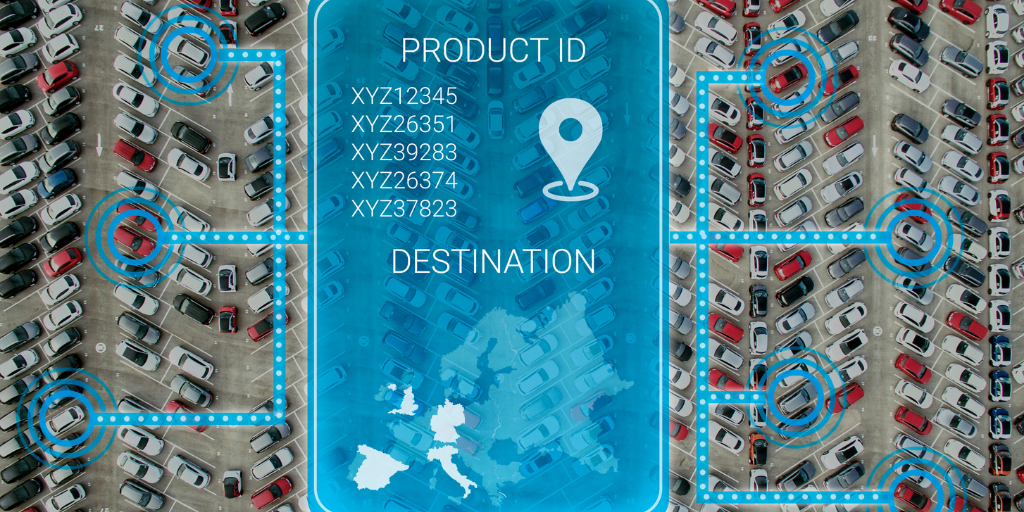The world of location-based services and tracking is constantly evolving, with new technologies and applications emerging all the time. One of the most exciting developments in recent years has been the rise of digital twins, which are virtual replicas of physical objects or systems. These virtual models can be used for a wide range of purposes, from product design and testing to predictive maintenance and optimization. When combined with real-time location systems (RTLS), digital twins can enable even more advanced applications, such as asset tracking and optimization.

So what are the latest trends in RTLS and digital twins, and how are these technologies being used in the real world?
RTLS and Digital Twins: A Match Made in Heaven
First, it’s worth exploring how RTLS and digital twins can work together to create powerful new applications. RTLS refers to systems that use sensors and other technologies to track the real-time location of assets, people, or vehicles within a designated area. By combining this real-time location data with a digital twin, organizations can create a virtual representation of the physical world that provides an unprecedented level of insight and control.
For example, a company that operates a large fleet of vehicles could use RTLS to track the location and status of each vehicle in real-time. By creating a digital twin of this fleet, the company could then simulate different scenarios and optimize routes, maintenance schedules, and fuel usage to maximize efficiency and minimize costs. Similarly, a manufacturing company could use RTLS and digital twins to monitor and optimize the performance of its production lines, ensuring that equipment is running at peak efficiency and minimizing downtime.
The Rise of Edge Computing
Another important trend in RTLS and digital twins is the rise of edge computing. Edge computing refers to the practice of processing and analyzing data closer to its source, rather than sending it to a central server or cloud for analysis. This approach can help reduce latency and improve performance, which is critical for real-time applications such as RTLS and digital twins.
By deploying edge computing technologies such as edge servers and gateways, organizations can process and analyze RTLS data in real-time, enabling faster and more accurate decision-making. This can be especially useful in applications such as predictive maintenance, where real-time insights are essential for detecting and addressing potential issues before they become major problems.
The Role of Artificial Intelligence
Finally, artificial intelligence (AI) is playing an increasingly important role in RTLS and digital twins. AI algorithms can analyze vast amounts of data from RTLS and other sources to identify patterns and trends, and make predictions about future behaviour. This can be used to optimize processes and improve efficiency, as well as to predict and prevent equipment failures and other issues.
For example, an oil and gas company could use AI and digital twins to simulate different scenarios and optimize production processes, while also predicting potential equipment failures and scheduling maintenance before a problem occurs. Similarly, a logistics company could use AI and RTLS to optimize shipping routes and minimize delivery times, while also predicting and preventing delays and other issues.
The Growth in UWB Technology
Ultra-wideband (UWB) technology has been gaining popularity in recent years as a highly accurate location-tracking solution for real-time location systems (RTLS). Unlike traditional location tracking technologies, such as Wi-Fi or Bluetooth, UWB offers much higher levels of accuracy, with the ability to track objects down to the centimetre level. This makes it ideal for use cases where precise location information is critical, such as in healthcare, manufacturing, and logistics.
One of the key advantages of UWB technology is its ability to work in environments with high levels of interference. UWB technology operates using short pulses of energy that are spread across a wide range of frequencies, making it highly resistant to interference from other wireless devices. This means that UWB can be used in environments where other location-tracking technologies, such as Wi-Fi or Bluetooth, may not be reliable.
Another advantage of UWB technology is its low power consumption. UWB devices typically operate at very low power levels, which means they can run for extended periods on a single battery charge. This makes them ideal for use in environments where devices need to operate for long periods without requiring frequent maintenance or replacement. Additionally, UWB devices can be integrated with other sensors and technologies, such as accelerometers, to provide even more granular data about the location and movement of objects or people being tracked.
Conclusion
In summary, the combination of RTLS and digital twins is a powerful tool that is being used to optimize a wide range of processes and applications. By creating virtual replicas of physical objects and systems, and combining this with real-time location data, organizations can gain unprecedented insights and control over their operations. The latest trends in RTLS and digital twins include the rise of edge computing, which enables faster and more accurate decision-making, and the increasing role of AI, which can analyze vast amounts of data and make predictions about future behaviour. As these technologies continue to evolve and mature, we can expect to see even more exciting applications and use cases in the future.
